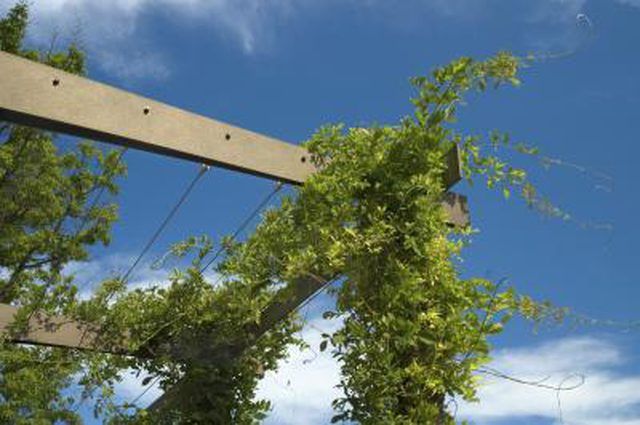Bulbs
Flower Basics
Flower Beds & Specialty Gardens
Flower Garden
Garden Furniture
Garden Gnomes
Garden Seeds
Garden Sheds
Garden Statues
Garden Tools & Supplies
Gardening Basics
Green & Organic
Groundcovers & Vines
Growing Annuals
Growing Basil
Growing Beans
Growing Berries
Growing Blueberries
Growing Cactus
Growing Corn
Growing Cotton
Growing Edibles
Growing Flowers
Growing Garlic
Growing Grapes
Growing Grass
Growing Herbs
Growing Jasmine
Growing Mint
Growing Mushrooms
Orchids
Growing Peanuts
Growing Perennials
Growing Plants
Growing Rosemary
Growing Roses
Growing Strawberries
Growing Sunflowers
Growing Thyme
Growing Tomatoes
Growing Tulips
Growing Vegetables
Herb Basics
Herb Garden
Indoor Growing
Landscaping Basics
Landscaping Patios
Landscaping Plants
Landscaping Shrubs
Landscaping Trees
Landscaping Walks & Pathways
Lawn Basics
Lawn Maintenance
Lawn Mowers
Lawn Ornaments
Lawn Planting
Lawn Tools
Outdoor Growing
Overall Landscape Planning
Pests, Weeds & Problems
Plant Basics
Rock Garden
Rose Garden
Shrubs
Soil
Specialty Gardens
Trees
Vegetable Garden
Yard Maintenance
How to Get Climbing Hydrangeas to Bloom
How to Get Climbing Hydrangeas to Bloom. Climbing hydrangeas commonly grow to a height of 30 to 40 feet but can eventually reach 80 feet. There are three species of climbing hydrangea: **woodvamp** (*Decumaria barbara*), **climbing hydrangea** (*Hydrangea anomala* subsp. *petiolaris*) and **Japanese hydrangea vine** (*Schizophragma hydrangeoides*)....

Climbing hydrangeas commonly grow to a height of 30 to 40 feet but can eventually reach 80 feet. There are three species of climbing hydrangea: woodvamp (Decumaria barbara), climbing hydrangea (Hydrangea anomala subsp. petiolaris) and Japanese hydrangea vine (Schizophragma hydrangeoides). All three species produce flat-topped clusters of white flowers in the spring or summer. Getting them to bloom is fairly easy, as long as their basic growing requirements are met.
Have Patience
Climbing hydrangeas take up to two years to become well-established. When they are taken out of their containers and planted in the soil, they are stressed. It takes time for them to recover, grow new roots into the soil and get comfortable. They generally do not bloom until the third or fourth year after being planted.
Watch for Cold Snaps
Protect flower buds from late freezes. Woodvamps are hardy in U.S. Department of Agriculture plant hardiness zones 6 to 8, climbing hydrangeas are hardy in USDA zones 4 to 8 and Japanese hydrangea vines are hardy in USDA zones 5 to 8. They can survive cold winter temperatures but, if the flower buds form and there is a late freeze, the buds can be killed before they bloom. Drape an old sheet or burlap over the vine to protect the buds when there is a late freeze predicted.
Provide Sunlight
Plant climbing hydrangeas in partial shade where they get four to five hours of direct sunlight each day, preferably with shade in the afternoon. They will grow in full shade but may not bloom or will bloom less profusely. Bright shade from tall trees and dappled shade provide enough light for them to bloom, but deep shade should be avoided. In cooler climates, they will bloom when grown in full sun as long as the soil is never allowed to dry out.
Provide Moisture
Water climbing hydrangeas as often as necessary to maintain uniformly moist soil. The soil should be moist but not muddy. Check the soil every few days and water the hydrangea when it begins to dry. For the first few years, 4 to 6 gallons each week should be plenty. Mature climbing hydrangeas may need up to 10 gallons of water each week. A 2- to 3-inch depth of organic mulch spread over the root zone will help maintain a moist environment.
Protect From Deer
Keep deer away from climbing hydrangeas. They like to eat the tender new leaves and flower buds. Spray deer repellent directly on the climbing hydrangea from the base to a height of 6 feet as soon as it begins to put on new leaves. Spray it when the weather is dry and temperatures are above 32 degrees Fahrenheit. An easy-to-make and highly effective repellent is a mixture of 80 percent water and 20 percent whole eggs. Remove the membrane that surrounds the yolk before mixing or it will likely clog the sprayer. Mix the solution, pour it into a spray bottle or hand-pump pressure sprayer and coat the hydrangea thoroughly. Apply the mixture every 30 days as long as deer are a problem.
Limit Fertilizer
Do not give climbing hydrangeas fertilizer that is high in nitrogen. Nitrogen, the first number on the fertilizer bag, promotes green, leafy growth. Phosphorus, the second number, promotes flowers. If lawn fertilizer is used to fertilize grass near the climbing hydrangea, be careful to spread it several feet away. Lawn fertilizer is high in nitrogen. Climbing hydrangeas generally should not be given any fertilizer at all.
Let It Grow
Do not prune climbing hydrangeas in the winter or early spring before they bloom. Pruning them at this time will remove the flower buds. Climbing hydrangeas generally do not need to be pruned at all. Prune them during the summer after they have bloomed only when it is absolutely necessary to restrict their growth. Use hand pruners that have been sterilized in household disinfectant. Rinse the disinfectant off the pruners and dry them before using them, as disinfectant could damage the stems. Make the pruning cut about ? inch above a branch, growth bud or set of leaves.